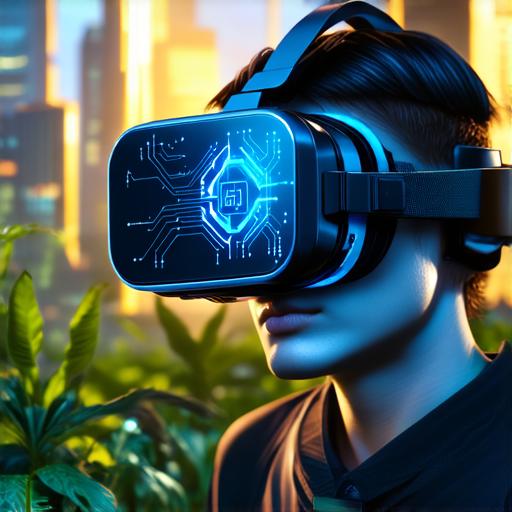Virtual reality (VR) technology has been advancing rapidly in recent years, and its impact on society continues to grow. From gaming to healthcare, VR is transforming how we interact with digital environments and providing new opportunities for learning and exploration.
One of the most exciting areas of development in VR is haptic technology. Haptic technology allows users to feel physical sensations while using virtual reality devices. This technology has the potential to revolutionize how we interact with virtual environments, making them more immersive and realistic.
For example, a surgeon could use a haptic glove to simulate performing surgery on a virtual patient, allowing them to practice their skills in a safe environment. The development of haptic technology is expected to continue in the future, leading to even more realistic and immersive VR experiences.
Another area of development is the integration of artificial intelligence (AI) into VR experiences. AI can help to create more personalized and interactive experiences for users.
For example, an AI-powered VR game could adapt to a player’s skill level and provide real-time feedback on their performance. This could help players improve their skills more quickly and efficiently. AI is also being used in healthcare to simulate medical procedures, allowing doctors and nurses to practice their skills in a safe environment.
As AI technology continues to advance, we can expect to see even more personalized and interactive VR experiences in the future.
The rise of 5G technology is also expected to have a significant impact on the future of VR. 5G technology promises faster speeds, lower latency, and greater connectivity than previous generations of wireless networks.
These advancements will make it possible to stream high-quality VR content in real-time, without buffering or lag. This could lead to more immersive and interactive experiences for users. As 5G networks continue to roll out, we can expect to see even more advanced VR experiences that are smoother and more responsive.
In addition, the development of standalone VR headsets is expected to continue. Standalone VR headsets offer greater freedom of movement and do not require a high-powered computer or internet connection to function.
This makes them ideal for use in remote locations or areas with limited infrastructure. For example, a construction company could use standalone VR headsets to train their workers on how to operate heavy machinery in a safe and controlled environment. Standalone VR headsets are also being used in healthcare to simulate medical procedures and treat mental health conditions such as anxiety and depression.
As this technology continues to advance, we can expect to see even more standalone VR experiences that are accessible and easy to use.
One of the most promising applications of VR is in the field of healthcare. VR technology can be used to simulate medical procedures, allowing doctors and nurses to practice their skills in a safe environment.
This could lead to improved patient outcomes and reduced medical errors. In addition, VR technology can be used to treat mental health conditions such as anxiety and depression. For example, a person with social anxiety disorder could use VR to simulate social situations and learn how to cope with them.
As VR technology continues to advance in healthcare, we can expect to see even more innovative uses of this technology in the future.

Despite the many benefits of VR technology, there are also challenges that must be addressed. One of the biggest challenges is the high cost of VR hardware and software.
This can make it difficult for smaller companies and organizations to invest in this technology. In addition, the lack of standardization in VR hardware and software can make it difficult for developers to create cross-platform experiences.
As the technology continues to evolve, it will be important to address these challenges in order to ensure that VR is accessible and affordable to everyone.
In conclusion, the future of virtual reality is bright. With advancements in haptic technology, AI, 5G networks, and standalone headsets, VR is poised to become an integral part of our daily lives. Whether you’re a developer or just someone who enjoys exploring new technologies, there is much to be excited about when it comes to the future of VR. As with any technology, there will be challenges to overcome, but the potential rewards are well worth the effort. With continued innovation and development, virtual reality has the potential to revolutionize how we learn, work, and play.
